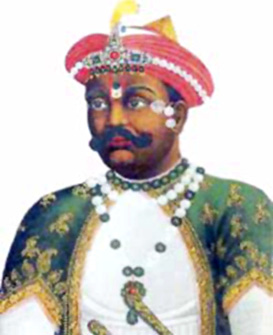 Eighteenth century was an important era for Indian history as it witnessed major developments. One of the most important events was the rise of the Marathas after the Panipat debacle and their gradual dominance in North India. However by 1818 AD the Marathas lost their political dominance. This resulted with the emergence of the British in the Indian political scenario. The Marathas under the British rule had an ever changing relation with the Europeans.
Eighteenth century was an important era for Indian history as it witnessed major developments. One of the most important events was the rise of the Marathas after the Panipat debacle and their gradual dominance in North India. However by 1818 AD the Marathas lost their political dominance. This resulted with the emergence of the British in the Indian political scenario. The Marathas under the British rule had an ever changing relation with the Europeans.
Their differences culminated in the First Anglo Maratha War. The war provided an eloquent testimony to the wisdom of Nana Farnavis and it concluded in the Treaty of Salbai. Post the Salbai period the Anglo Maratha relation underwent changes. Both the powers followed the policies of understanding and cooperation. This was primarily because they needed to subjugate a third front, Tipu Sultan of Mysore and the Pitt`s India Act prevented the British from declaring war on the Indian rulers. The Marathas, thus, entered into an alliance with the British to combat Tipu. On the other hand, Mahadji Sindhia successfully established the new Maratha Empire without any resistance from the British East India Company. In fact, under the governorship of Warren Hastings the British often stayed away from any direct confrontation with the Marathas.
Moreover, during the latter part of the eighteenth century, Marathas and British had met in desultory fashion, both as friends and foes. The latter stayed away from the Maratha homeland and Shivaji`s brother Venkaji established a Maratha dynasty in Tanjore, near Madras (Chennai). On the other hand, a body of Marathas under an adventurer, Morari Rao, fought sometimes against the British, sometimes (as in Clive`s Arcot campaign) on their side. It was the Fourth Anglo Mysore War (1789-99) that marked the end of Tipu`s reign.
The growing differences between the Maratha chieftains was another reason why the British chose not to interferer with their policies. They were hoping for a quick deterioration of the empire as the distance between Nana Farnavis, Sindhia and Holkar was increasing day by day. With the ushering of the 19th century the equations were once again ready to undergo changes. The already weakened Mughal Empire provided an apt opportunity to the British to takeover the governing of India. As far as Marathas were concerned, they supported the Sepoy Mutiny of 1857. However lack of organisation and improper planning led to the victory of the British and the Marathas completely lost their suzerainty in north India.
There were two powers in India that posed threats to the British annexation policies; one was the Mughals and the other was the Marathas. However, with the Sepoy Mutiny crushed completely the fate of both the British and the Marathas were sealed. The former took over Indian and annexed her to their colonies and the Maratha power was destined to face the swan song.



















